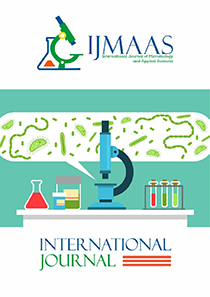Assessment of the Impact of Artisanal Refinery on Soil Quality and Microbial Population at Obi-Ayagha Community, in the Niger Delta, Nigeria
Vol 1, Issue 1, 2023
KEYWORDS
Artisanal refinery, crude oil, hydrocarbon contamination, soil quality, microbial density
Abstract
The impact of artisanal refinery on soil quality and microbial population of the soil at Obi-Ayagha Community, Delta State, Nigeria was studied. The model contamination rating Map of Obi-Ayagha Community indicated a total land mass of study area of 16,755.16Sq meters. Five (5) soil sampling points were selected within the abandoned Artisanal Refinery site using random sampling techniques. Uncontaminated soil served as control. Standard sampling and analytical analyses were carried out using standard methods of ASTM, APHA and API. Results of nitrate concentrations varied between 2.28 and 11.26mg/kg while phosphate concentration ranged from 3.02 - 17.36mg/kg. These values are below the recommended 10mg/kg for fertile soils. The pH values ranged from 3.80 – 5.10 (acidic) while Total Organic Carbon concentrations ranged from 0.37 – 2.96%. Total petroleum hydrocarbon concentration ranged from 1.28mg/kg to 152.58mg/kg and most values obtained were below the Nigeria Upstream Petroleum Regulatory Commission (NUPRC) target (50mg/kg) and intervention limit (5000mg/kg). However sampling point 1 was above NUPRC target value. Heterotrophic bacterial counts of the soils ranged from 1.15 x 105 CFU/g to 2.58 x 105 CFU/g, while fungal counts ranged from 1.00 x 104 CFU/g to 2.08 x 104 CFU/g. Control soil recorded higher counts. Heavy metals analyzed were in compliance with available NUPRC Target and Intervention limits, except Iron which was relatively higher ranging from 400mg/kg to 6645mg/kg. Most parameters analysed were below available regulatory limits which could be attributed to the prolonged abandonment of the artisanal refinery activities and natural attenuation that restored the contaminated site to some extent. However, the studied site would require remediation treatments to improve its nutrient status as to support revegetation which currently is scanty at the contaminated site.
Current: Vol. 4, Issue 1, 2025

Call for papers
The International Journal of Microbiology and Applied Sciences warmly welcome your valuable articles for publication.
